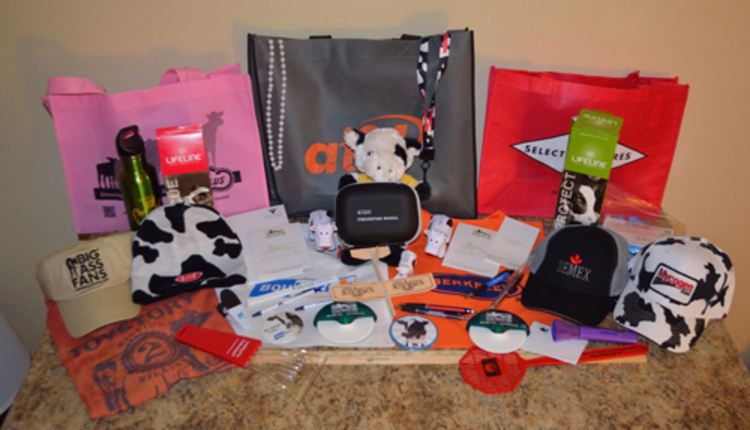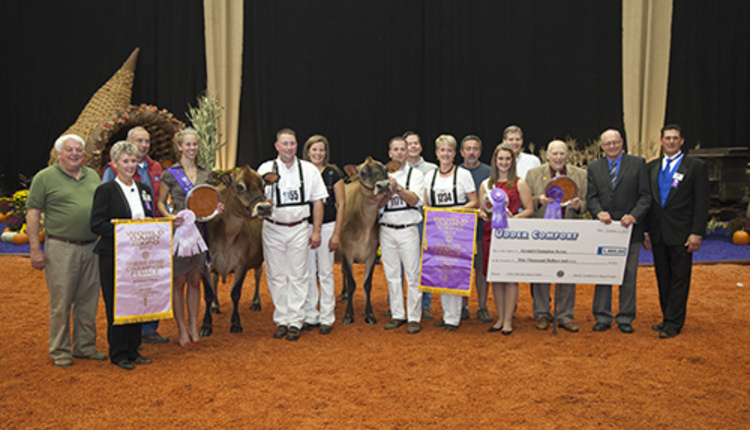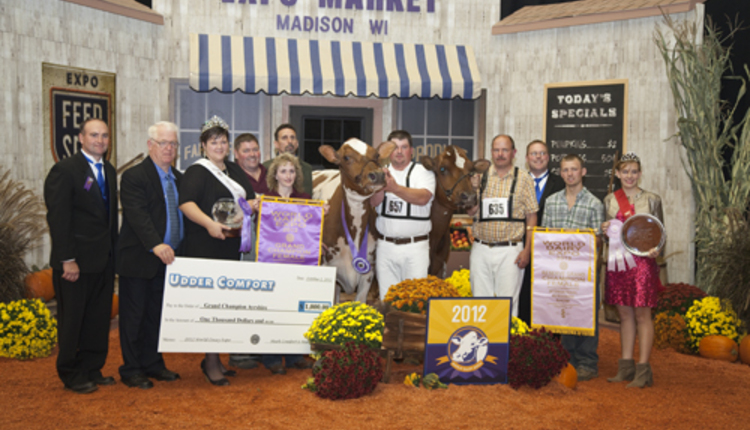For decades, youth have exercised critical thinking and decision-making skills through participating in dairy cattle judging. While hundreds of youth step onto the shavings and mark their cards, a few individuals have the luxury of saying they were a national champion. I took a moment during Expo to visit with a handful of these individuals.
Curtis Day won the National 4-H Contest in 1960. After his 4-H career, he worked as a dairy farmer, a classifier and for the postal service. When asked how he felt before he heard the results on the day he won the National 4-H Contest he responded, "Dairy judging is like playing the tables in Vegas. If you are happy about how you did, all you can do is wait for the answers."
While sometimes a little bit of luck might be just the ingredient needed to win a contest, all of the contest winners I visited also put forth a great deal of hard work and dedication to improving. They all agreed that unlike gambling, dairy judging offers rewards regardless of the outcome of a contest.
Luke Olson, now a district sales representative for Semex, won the National Collegiate Contest in 2006 while judging for the University of Minnesota.
"Winning the national contest has given me credibility when discussing cows and in my career," explained Olson.
Today, Olson uses the knowledge he gained from dairy judging as a judge at several shows. Most notably, he has judged the Olmsted District Show, the Minnesota State 4-H Colored Breed Show and served as an official for the National 4-H Contest this year. His goal is to someday be a judge at World Dairy Expo.
"Pay attention to good judges, watch shows, ask questions and learn from your elders," advised Olson to youth looking to improve their judging. "I owe my eye for cattle to my father. Being competitive with my sisters over the years also helped me."
Laurie Winkelman is one of only four individuals who earned high individual honors in both the 4-H (2000) and Collegiate (2002) national contests. Today she works as a dairy nutritionist for VitaPlus. Winkelman noted that the ability to give oral reasons and defend information in a logical and organized way has helped her throughout life and her career.
"Both years I won, I kept a list of terms and phrases for reasons. I would add phrases I wanted to try and make note of phases to avoid," explained Winkelman. "I also set high goals for myself each year."
Brian Behnke won the contest while was was a student at the University of Wisconsin-Madison, in 1988. Today he is working as a sire analyst for Semex. He attributes his ability to stand up in front of people, defend a decision and think on his feet to the years he spent dairy judging. Behnke says the biggest advice he can provide students preparing for the national contest, is practice makes perfect.
"Dairy judging involves a lot of team practices, but to get better, you must also work on things individually," said Behnke. "We used to video tape our reasons. If you are honest with yourself and critique yourself, you can see many things to work on. I used to get tongue tied, so I did many exercises to control my voice during reasons."
These individuals would all agree, that dairy judging opened many doors for them. After winning the 4-H contest, Curtis Day traveled to judge in Europe. He values the memory of shaking hands with Queen Elizabeth's mother after winning the European contest. Even 52 years since Day won the National 4-H Contest, he is still using his dairy judging talents. On Thursday, he judged the International Brown Swiss Show at World Dairy Expo. Later this year, he will travel to Australia to judge.
As you can see, practice has set these judges up for success.










